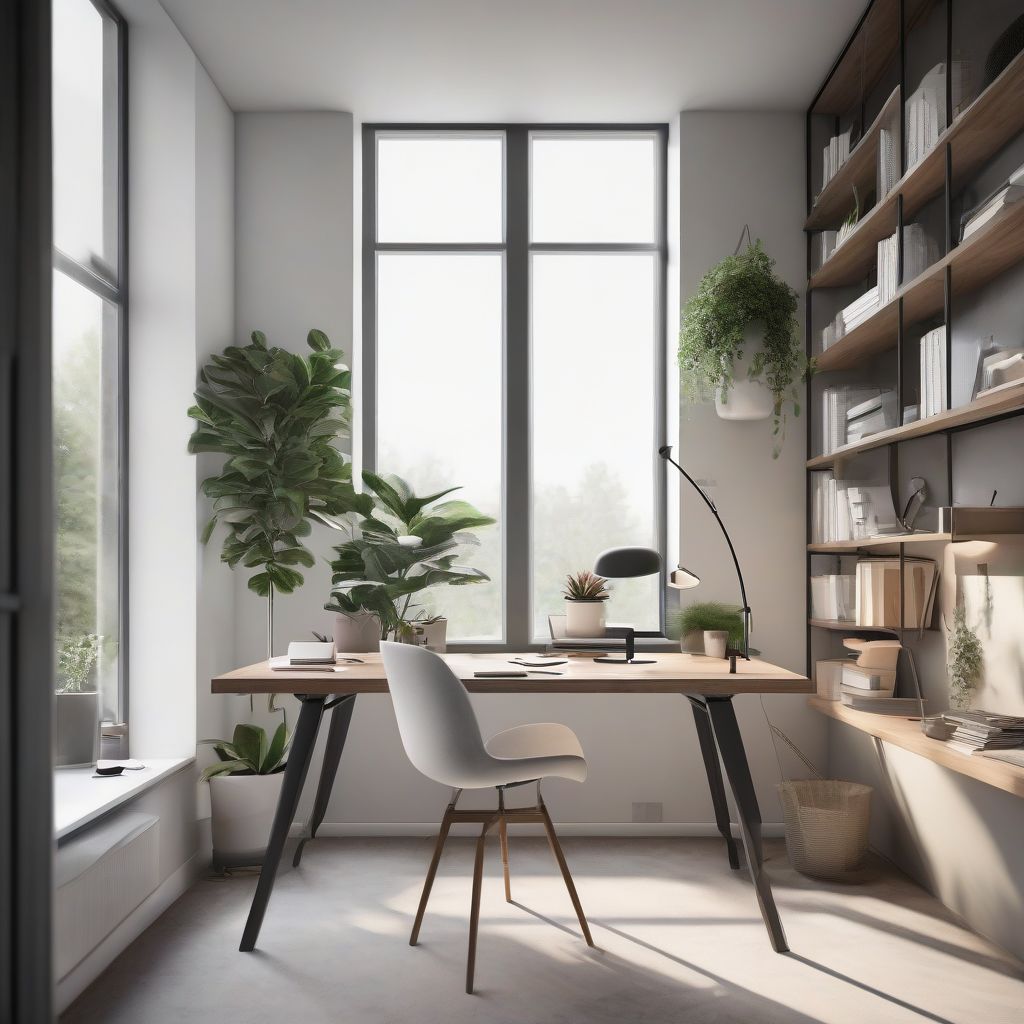Imagine this: you wake up energized, excited to conquer your workday from the comfort of your home office. As you settle into your workspace, you notice a seamless blend of comfort, functionality, and style. Your chair anticipates your movements, your desk adjusts to your ideal height, and natural light bathes the room, boosting your mood and productivity. This isn’t a scene from a futuristic film – it’s the promise of ergonomic design in the home office of tomorrow.
Ergonomics: It’s More Than Just a Buzzword
For years, ergonomics has been a key consideration in traditional office settings, but the rise of remote work has brought the need for ergonomic home offices to the forefront. But what exactly does “ergonomic” mean, and why should you care?
Simply put, ergonomics is the science of designing and arranging workspaces, products, and systems to optimize human well-being and overall system performance. It’s about creating an environment that works with you, not against you.
A poorly designed workspace can lead to a host of physical problems, including:
- Musculoskeletal disorders (MSDs): Think carpal tunnel syndrome, back pain, neck pain, and eye strain.
- Reduced productivity: Discomfort is distracting! When your body is uncomfortable, your focus suffers.
- Increased stress and fatigue: Pain and discomfort can take a toll on your mental well-being, leading to burnout.
The Future is Flexible: Adaptable Furniture Takes Center Stage
Gone are the days of one-size-fits-all office furniture. The future of ergonomic design is all about adaptability and personalization. Imagine:
- Smart desks that adjust their height throughout the day, seamlessly transitioning from sitting to standing positions with the touch of a button (or even automatically based on your pre-set preferences).
- Chairs that adapt to your body: We’re talking about chairs with dynamic backrests that provide customized support, adjustable armrests, and even built-in sensors that monitor your posture and provide feedback.
- Modular workstations: These are flexible systems that allow you to customize your workspace based on your needs. Need more surface area? Add an extension. Prefer a more open feel? Easily reconfigure the layout.
 Adjustable Desk in Home Office
Adjustable Desk in Home Office
[amazon bestseller=”adjustable desk”]
Beyond Furniture: Holistic Design for a Healthier Home Office
Ergonomic design in the future isn’t just about furniture – it’s about creating a holistic and healthy workspace that supports your overall well-being. Here’s what you can expect:
- Integration of natural elements: Biophilic design, which focuses on incorporating elements of nature into the built environment, will play a crucial role. Think living walls, natural light optimization, and improved ventilation.
- Focus on lighting: Harsh overhead lighting will be a thing of the past. The future will bring adjustable lighting systems that mimic natural light patterns throughout the day, reducing eye strain and promoting better sleep cycles.
- Sound control: Open-plan homes are great for spaciousness, but they can be an acoustic nightmare. Expect to see innovative sound-absorbing materials and furniture designed to minimize distractions and create a more focused work environment.
- Technology that works for you: From ergonomic keyboards and mice to voice-activated assistants that reduce the need for repetitive typing, technology will continue to play a crucial role in creating a more comfortable and efficient workspace.
Designing Your Ergonomic Home Office: Tips for Today and Tomorrow
You don’t have to wait for the future to enjoy the benefits of ergonomic design. Here are a few tips to create a healthier and more productive workspace right now:
- Invest in a good chair: Look for one with adjustable height, lumbar support, and armrests.
- Position your monitor correctly: The top of your screen should be at eye level, and you should be an arm’s length away.
- Prioritize natural light: Position your desk near a window if possible.
- Take breaks: Get up and move around at least once an hour.
- Listen to your body: If you’re feeling discomfort, make adjustments.
The Future is Bright (and Ergonomic!)
The future of ergonomic design in home offices is all about creating spaces that are not only functional and aesthetically pleasing but also prioritize your health, well-being, and productivity. By embracing these advancements, we can create home offices that inspire us, support our best work, and stand the test of time.
So, take a look around your home office. Are you ready to embrace the future of ergonomic design?
